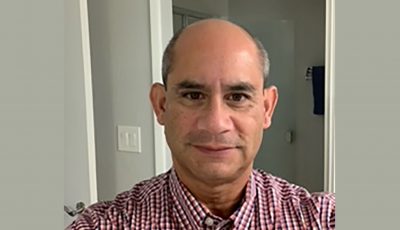RICK’S COLUMN
US-Korea relations
As the Chamorro people of the Marianas Islands already know, South Korea is an integral part of the broader blue ocean geopolitical landscape. The United States has a mutual defense treaty in place with South Korea that outlines America’s commitment to South Korea should the country be attacked.
South Korea is home to about 30,000 American troops. It houses the largest base overseas and it continues to embark on a multibillion-dollar relocation effort of U.S. military personnel south of Seoul. The United States contributes roughly $800 million a year toward funding its part of this military-to-military relationship, which remains in constant motion.
Unlike Guam and the Northern Marianas where most of the military personnel are sailors or airmen, South Korea has a high concentration of U.S. Army personnel and military equipment that support operations not only in the immediate region, but worldwide as well.
South Korea and the United States remain at odds, however, over how to approach relations with North Korea. The United States prefers to have South Korea keep its distance from North Korea and not support the loosening of various sanctions. South Korea prefers to improve overall relations with its northern neighbor.
The U.S. seeks to provide monetary aid to North Korea in exchange for denuclearization commitments. North Korea has been partially boxed in economically, unable to import and export as much as it wants due to United Nations and American-based trade sanctions.
The current South Korean president has publicly stated his desire toward finding ways to work with the North Koreans, intending to denuclearize the entire peninsula. South Korea’s rationale is founded on the need to manage competing pressures and interests informed by U.S. Sino interests.
Yet the South Korean president must somehow steer policy positions held by the United States on denuclearization. Real incremental gains may be further delayed as the South Korea president’s term expires next year. Elements of President Moon’s inner circle have expressed the desire to distance South Korea from American geopolitical proclivities in the region.
Thus the key challenge for the South Koreans is how to diplomatically triangulate divergent American interests closer in line with South Korea’s long-term desire to create lasting peace on the peninsula, without unnecessarily provoking the Chinese or the North Koreans.
Economic realities
Both the United States and South Korea maintain multibillion-dollar trade relations amounting to almost $200 billion worth of goods and services that flow to and from both countries each year.
South Korea’s single largest trading partner, as is the case with the Philippines, is China. China is South Korea’s largest source of foreign direct investment, followed by the United States.
Geopolitics, geoeconomics and military alliances intersect on the peninsula in ways that are nuanced and hued, making it difficult at times for the casual observer to fully appreciate the complexity of not only the U.S.-South Korea relationship, but the totality of various other stressors that impact South Korea’s ability to manage its own internal affairs.
The reason it is important for our Chamorro people to understand these layers and relationships is that this geopolitical environment heavily influences South Korea decisions related to matters of U.S.-Korea military affairs. The U.S. is the cornerstone stakeholder militarily in South Korea. China is the cornerstone entity economically in South Korea.
Pentagon resources based in Guam directly support contingencies that could take place on the Korean peninsula. American sea-based naval assets provide a broad umbrella of protection for Guam when the North Koreans threaten our island chain with ballistic missile attacks. The Northern Marianas Islands are less protected.
What Guam and the Northern Marianas should expect to see
South Korean firms have firmly established and taken advantage of U.S. military contracts located in South Korea and Guam. Since COVID-19, Korea tourist arrivals have all but dried up and will take some time to recover.
Guam, the Northern Marianas, and South Korea continue to be relatively effective and aggressive with how each location has handled the delivery of COVID 19 testing and immunization rollouts. In South Korea’s case, the country remains relatively challenged with fully executing a nationwide COVID-19 vaccination program.
Our Chamorro people should remain keenly abreast of North Korea’s unilateral moratorium on nuclear and long-range ballistic missile tests because this status may change. North Korea denuclearization is prefaced on the cessation of American-South Korean military exercises.
North Korea remains an active participant in initiating cyberwarfare attacks worldwide and is incentivized to understand how to take down Guam’s energy and water infrastructure to stymie the ability of the Pentagon to fully carry out any number of offensive or defensive mission sets against Pyongyang.
To the extent that the United States, South Korea, and Japan remain unable to vastly improve multilateral military-based relations, Guam and the Northern Marianas Islands will remain even more important to allied and U.S. operational planners and some of the most senior American national government officials.
Possible economic opportunities abound for our people that may have been previously overlooked. One opportunity that might be unrealized is a South Korea-Marianas Islands partnership with semiconductor manufacturing or transshipment opportunities. South Korea, as well as Taiwan, are heavily engaged in the production of semiconductors, which are key inputs toward sustaining the functioning of the global digital and high-tech economy. The difficulty, however, is that semiconductor manufacturing is a capital-intensive enterprise that requires very specific equipment and conditions to successfully complete.


























